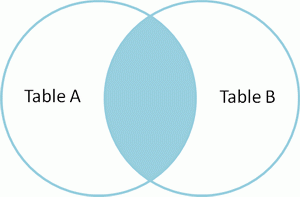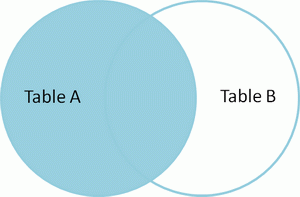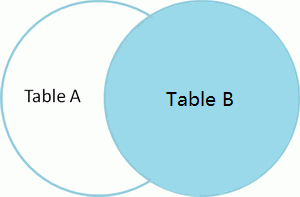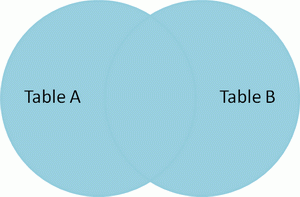sql server join联结
join学习起来有点乱,现做如下整理:
table A
| id | abc |
| 1 | a |
| 2 | b |
| 3 | c |
| 4 | d |
table B
| id | abc |
| 1 | e |
| 2 | a |
| 3 | f |
| 4 | c |
--join或者inner join (内连接、等值连接):只返回两个表中连接字段相等的行。
--select * from A inner join B on A.abc=B.abc

| id | abc | id1 | abc1 |
| 1 | a | 2 | a |
| 3 | c | 4 | c |
--left join(左连接) :返回A表中所有的记录以及B表中连接字段相等的记录,没有匹配的则以null值取代。
--select * from A left join B on A.abc=B.abc

| id | abc | id1 | abc1 |
| 1 | a | 2 | a |
| 2 | b | null | null |
| 3 | c | 4 | c |
| 4 | d | null | null |
--right join(右连接):返回B表中所有的记录以及A表中连接字段相等的记录,没有匹配的则以null值取代。
--select * from A right join B on A.abc=B.abc

| id | abc | id1 | abc1 |
| null | null | 1 | e |
| 1 | a | 2 | a |
| null | null | 3 | f |
| 2 | c | 4 | c |
--full join(外连接、全连接):返回两个表中的行:left join + right join。对于没有匹配的记录,则会以null做为值。
--select * from A full join B on A.abc=B.abc

| id | abc | id1 | abc1 |
| 1 | a | 2 | a |
| 2 | b | null | null |
| 3 | c | 4 | c |
| 4 | d | null | null |
| null | null | 1 | e |
| null | null | 3 | f |
--先按照A表中的记录一条一条到B表找匹配项,没有则用null代替。
--再按照B表中的记录一条一条到A表找匹配项,没有则用null代替。
--排除重复的记录,则为最后结果
--cross join:结果是笛卡尔积,就是第一个表的行数乘以第二个表的行数。
要么生,要么死





